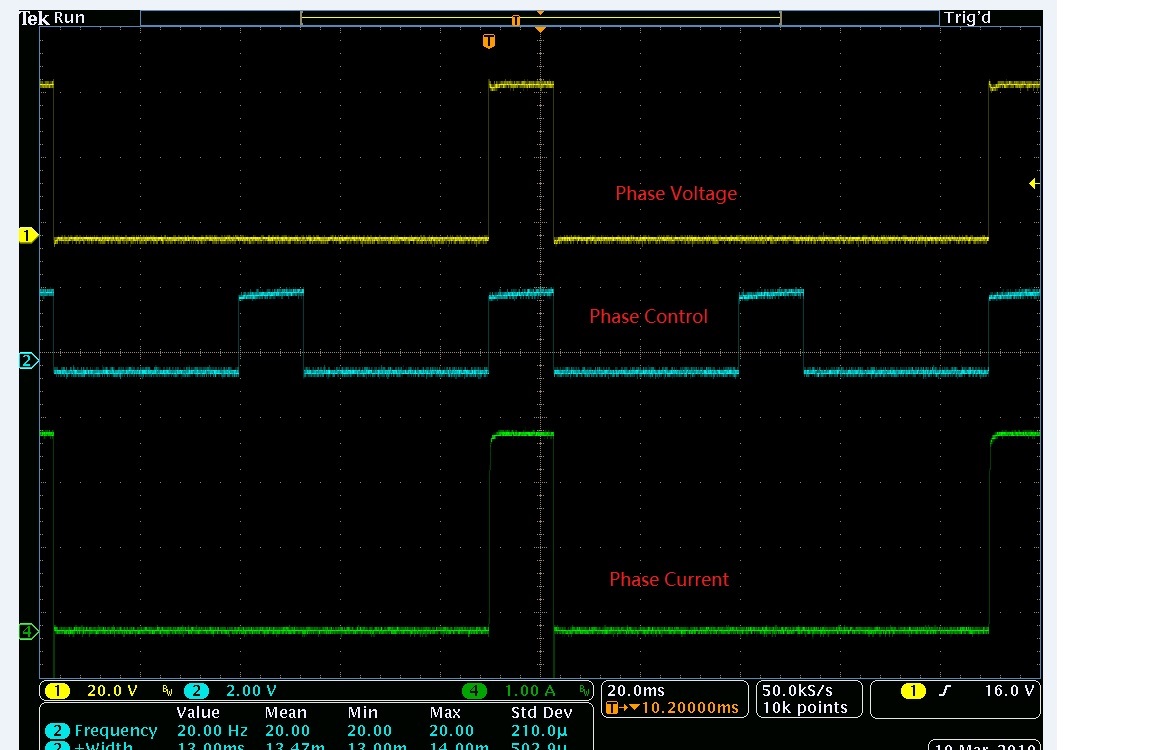We had a old sensorless BLDC design which used six discrete N-MOSFETs( IRF5NJ540) , one 3-Phase Driver IR2130D and three comparators. . The boot-strap capacitor of old design was 3.3uF. The PWM duty-cycle is 100%. The power supply of this BLDC is 50V. The current limitation of power supply is 1A. When current of 50V is greater than 1A, 50V will drop to around 10V. We are trying to replace the old design using DRV8332-HT, the boot-strap capacitor of new design is 4.7uF.. The new design which use DRV8332-HT has start-up issue, but the old design does not have this issue.
Sensorless BLDC parameter: The resistance between phase to phase is around 12Ohm, the inductance is around 5.7mH.
The motor control of old design is done by FPGA, for the new design, we just did the following conertion inside FPGA::
Suppose HOUT1,HOUT2, HOUT3, LOUT1, LOUT2,LOUT3 (active low) is six gate control signals for discrete MOSFET solution, the for DRV8332-HT, the logic of six control signals are:
PWM1= not HOUT1,
PWM2=not HOUT2,
PWM3=not HOUT3,
RESET1= '0' when HOUT1 ='1' and LOUT1='1' else
'1';
RESET2= '0' when HOUT2='1' and LOUT2='1' else
'1';
RESET3= '0' when HOUT3 ='1' and LOUT3='1' else
'1';
Each step (six-step) PWM is around 15ms when motor start-up for the old design, no alignment, no PWM ramp up.. We do not want to change control code now.
What is the possible reason for start-up issue of this new design? Why the old design can start, but the new design cannot ?



